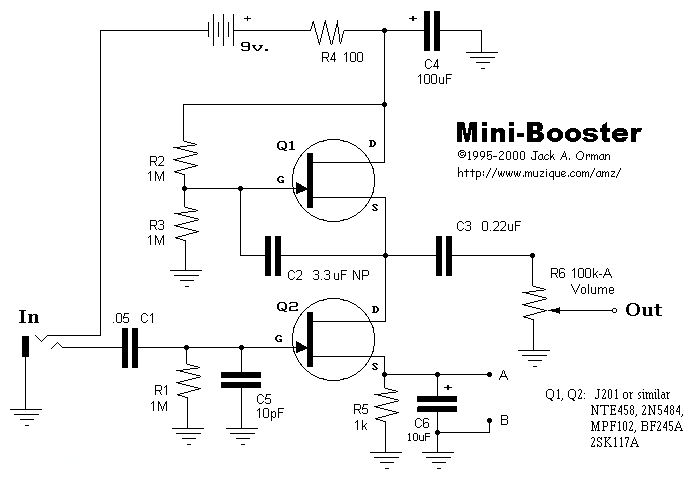CWS001
This is where it all began. When looking for a first project to build I stumbled on Jack Orman’s version of the minibooster circuit, which I used as a building block for the first pedal. This circuit, also called a mu-amp circuit, uses dual JFET transistors in a stacked configuration and is capable of producing a wide range of gain levels—anywhere from a gentle clean boost to an aggressive saturated overdrive. If this circuit is tuned correctly, changing the volume of the pedal gives the same effect as turning up or down the volume on the amp. There are also nearly limitless possibilities for tuning the circuit for other applications—boosting bass, boosting highs, adding or cutting mids—all which can either be set to a fixed setting inside the pedal or controllable on the outside with switches and potentiometers.
This first pedal simply had a volume knob and a gain switch, which changed the bias on the transistors so that at low gain it was a smooth clean boost and at high gain a dirty overdrive. Because there was no tone knob on this pedal it had a wide open feel and very pronounced top end. This added quite a bit of shimmer and break up to the original signal which I found to be a pleasing addition to most sterile sounding solid-state amps, but was a bit harsh and over the top for most tube amps I played through.
This pedal ended up being disassembled and recycled to be used as a footswitch for prototyping and the guts removed and placed in a static free bag for me to find later and maybe someday make a new home for.
The follow up pedal was another variation on this same design, CWS002.
